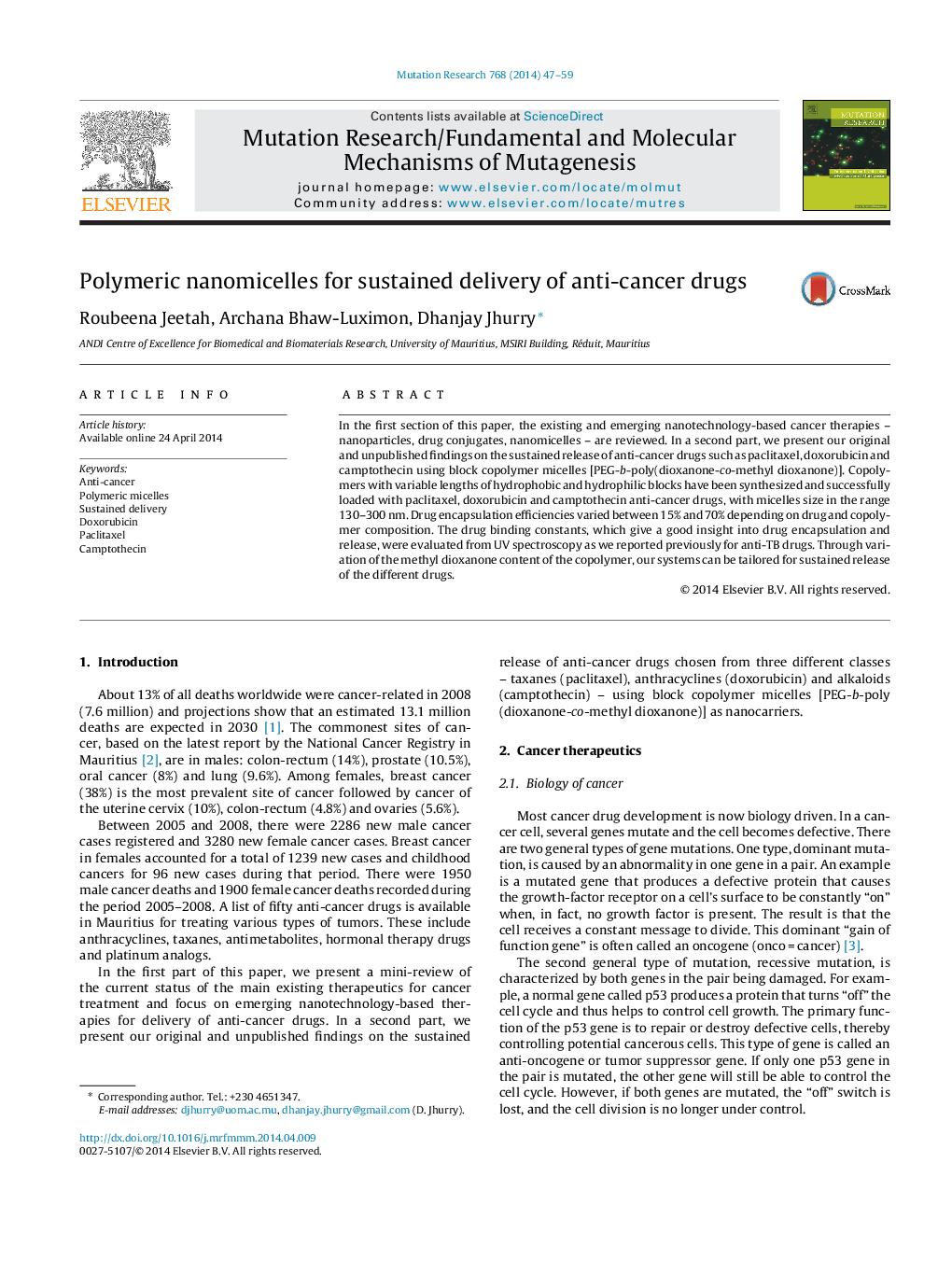| Article ID | Journal | Published Year | Pages | File Type |
|---|---|---|---|---|
| 2146294 | Mutation Research/Fundamental and Molecular Mechanisms of Mutagenesis | 2014 | 13 Pages |
•Mini-review of cancer therapeutics with focus on nano-based technologies.•Discussion of authors’ original, unpublished findings on encapsulation of anti-cancer drugs in PEG-block-poly(ester-ether) nanomicelles.•Tuning of drug release kinetics by hydrolytic degradability of micellar core.•Determination of drug binding constants to correlate loading and release of drugs.
In the first section of this paper, the existing and emerging nanotechnology-based cancer therapies – nanoparticles, drug conjugates, nanomicelles – are reviewed. In a second part, we present our original and unpublished findings on the sustained release of anti-cancer drugs such as paclitaxel, doxorubicin and camptothecin using block copolymer micelles [PEG-b-poly(dioxanone-co-methyl dioxanone)]. Copolymers with variable lengths of hydrophobic and hydrophilic blocks have been synthesized and successfully loaded with paclitaxel, doxorubicin and camptothecin anti-cancer drugs, with micelles size in the range 130–300 nm. Drug encapsulation efficiencies varied between 15% and 70% depending on drug and copolymer composition. The drug binding constants, which give a good insight into drug encapsulation and release, were evaluated from UV spectroscopy as we reported previously for anti-TB drugs. Through variation of the methyl dioxanone content of the copolymer, our systems can be tailored for sustained release of the different drugs.
